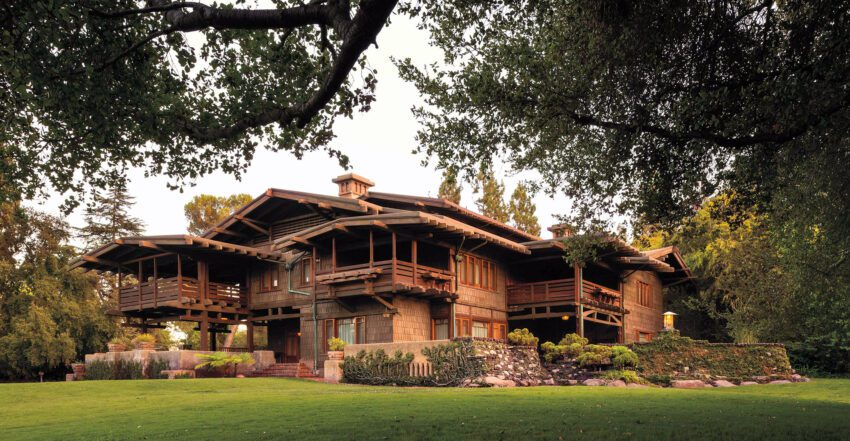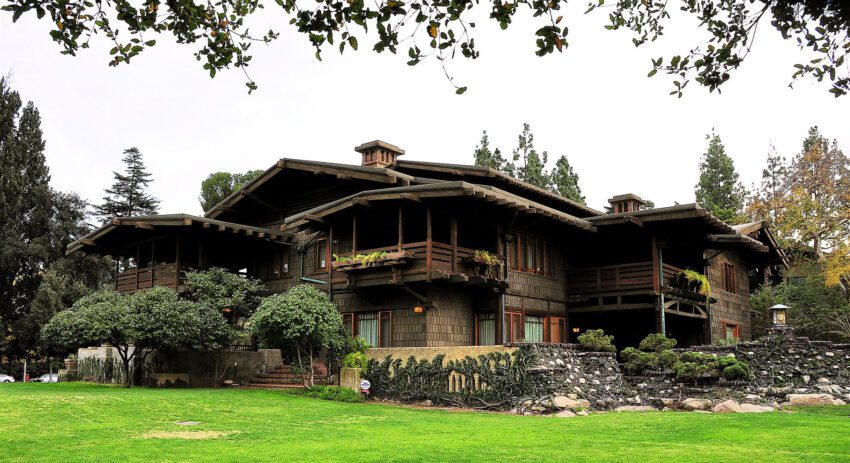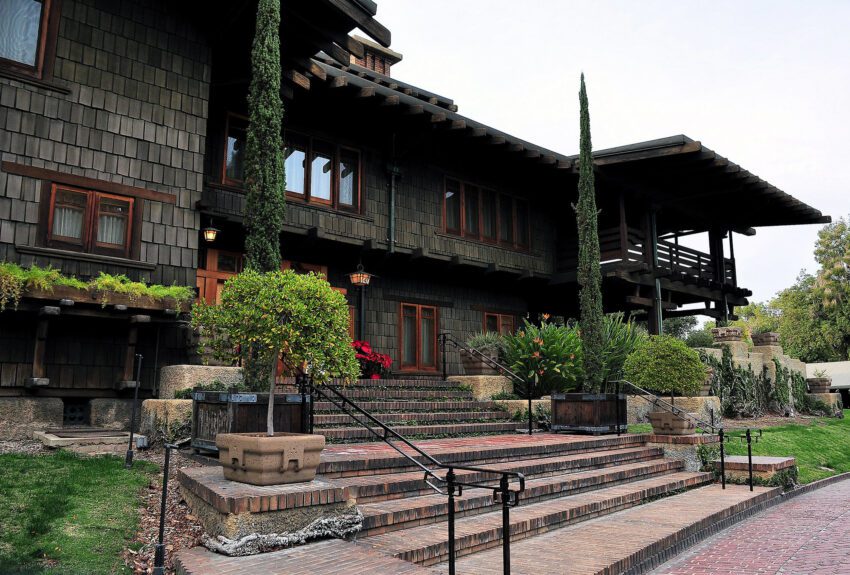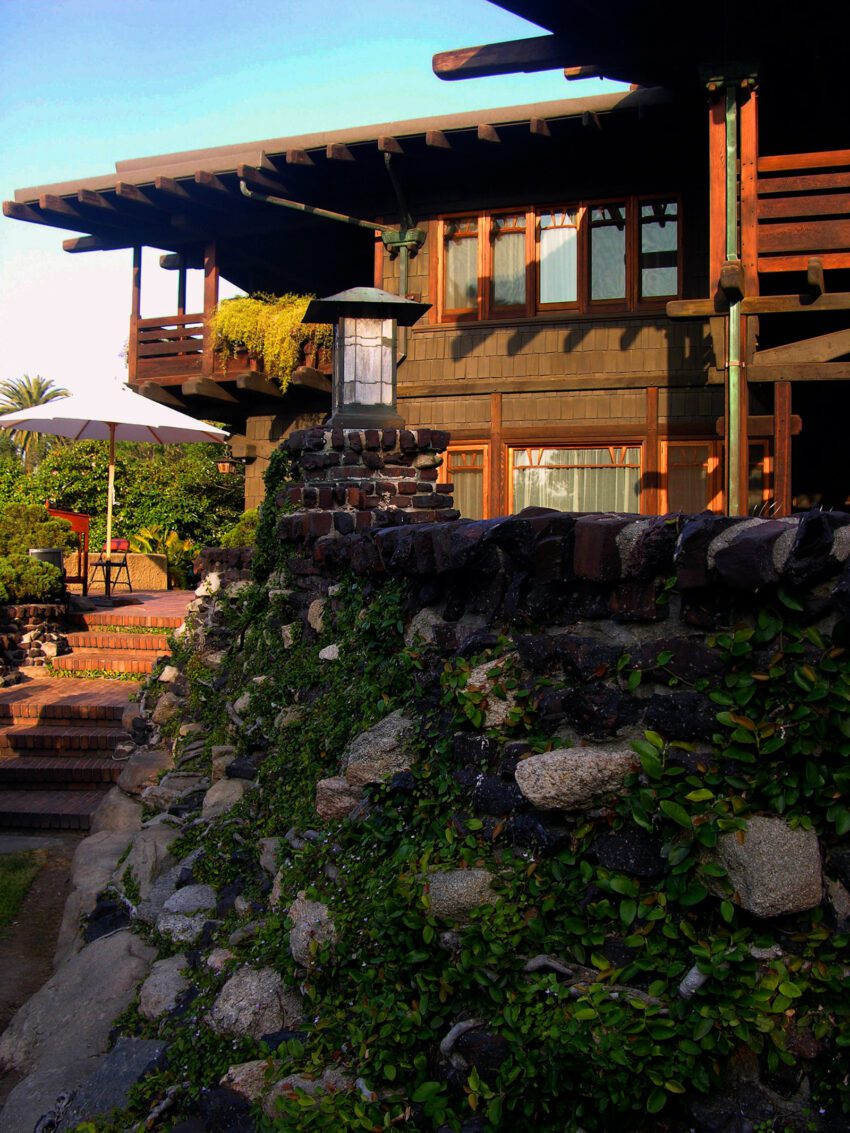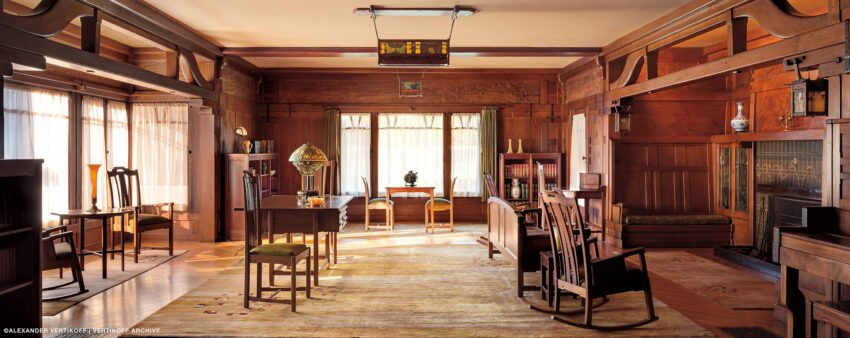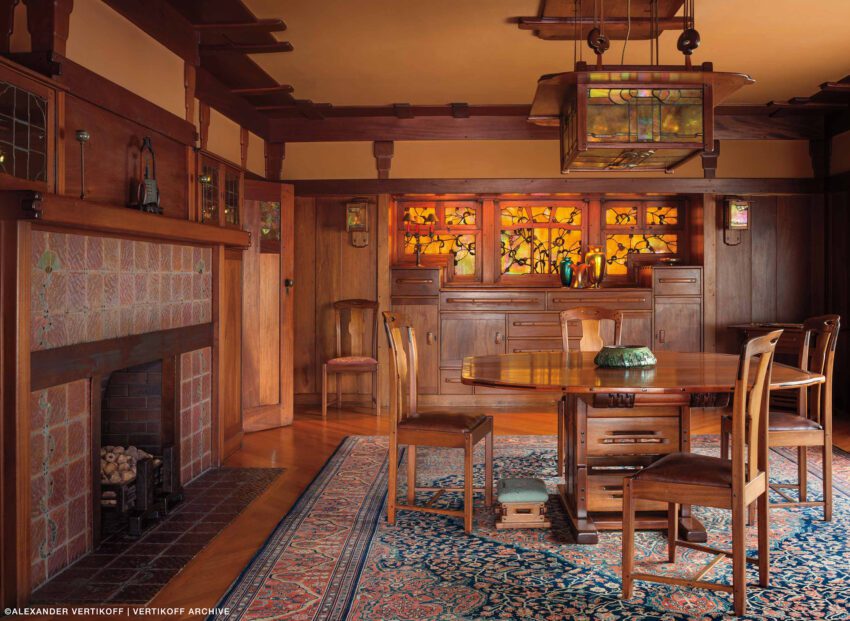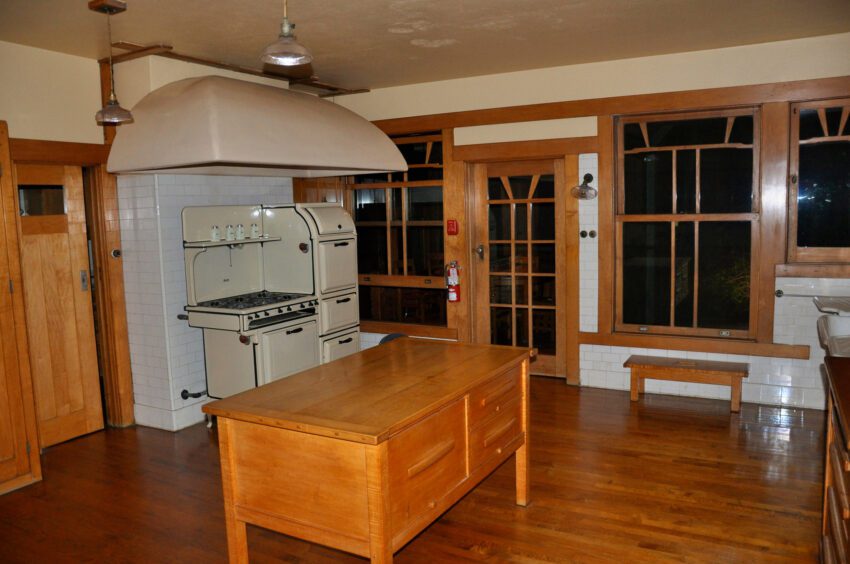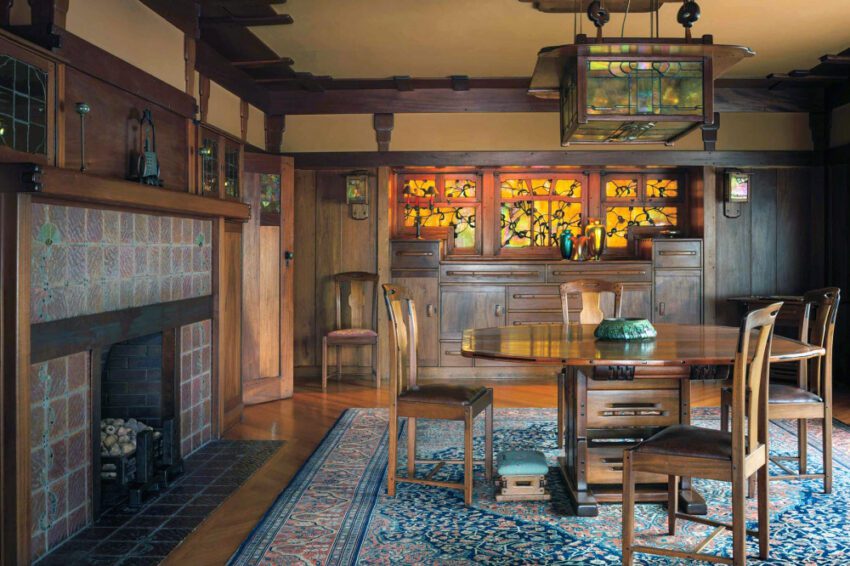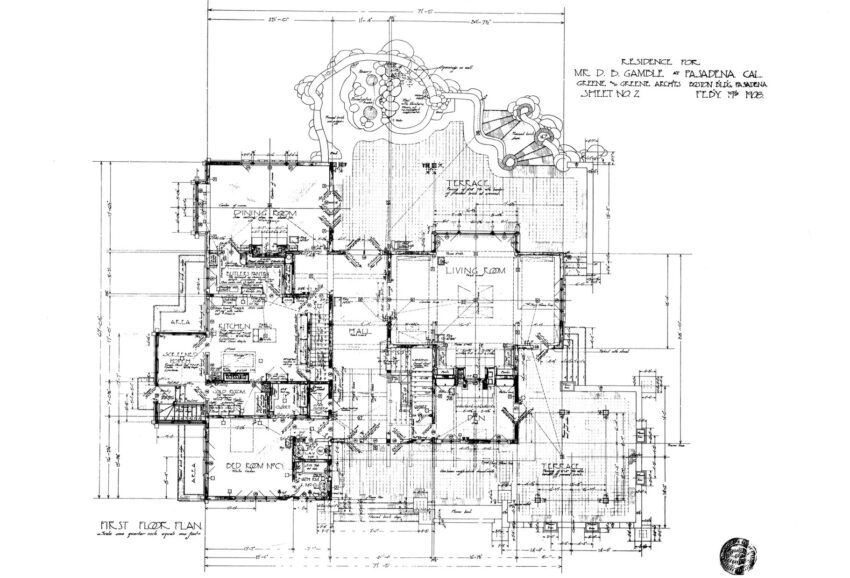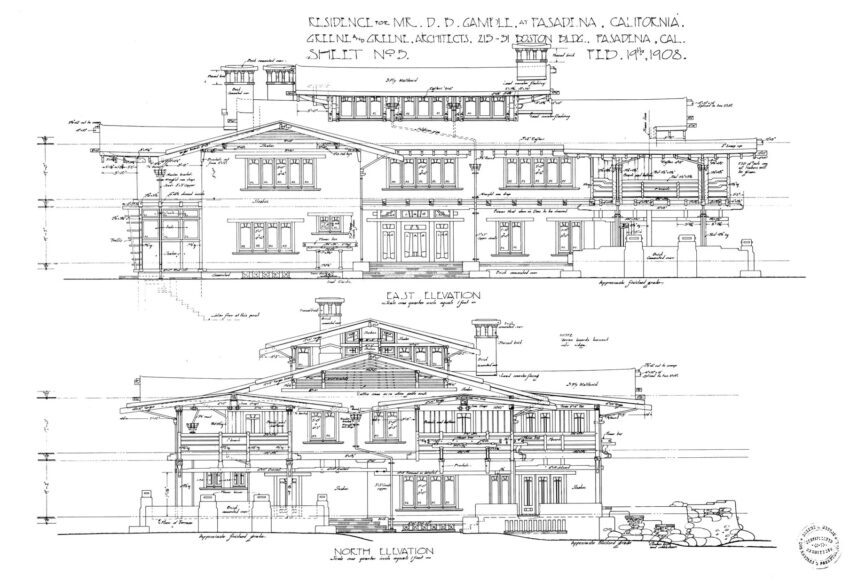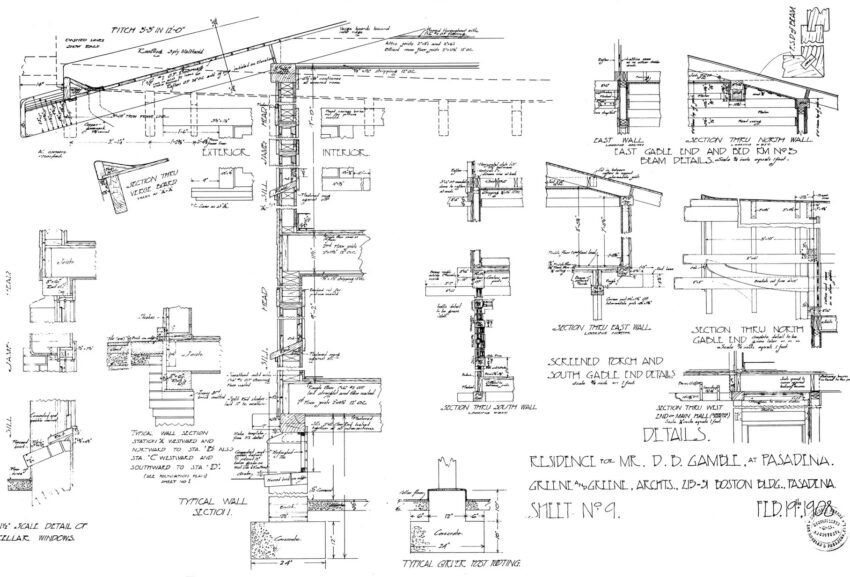The Gamble House is a paramount example of the American Arts and Crafts movement located in the lush suburbs of Pasadena, California. Designed by the sibling duo Charles Sumner Greene and Henry Mather Greene, the project was commissioned in 1908 as a winter retreat for David and Mary Gamble of the Procter & Gamble Company. Beyond its historical significance, the Gamble House showcases the Greene brothers’ innovative approach to design, which harmoniously blends crafted woodwork, meticulous attention to detail, and integration with the natural surroundings.
The Gamble House Technical Information
- Architects1-2: Greene and Greene
- Location: Pasadena, California, USA
- Topics: Arts and Crafts
- Area: 760 m2 | 8,200 ft2
- Project Year: 1908 – 1909
- Photographs: See Caption Details
The quality of a thing, and its fitness, constitute its beauty.
– Charles Sumner Greene and Henry Mather Greene 3
The Gamble House Photographs
Historical Context
The Arts and Crafts movement, originating in Britain in the late 19th century, was an influential design philosophy advocating for handmade craftsmanship, natural materials, and a rejection of industrial mass production. It gained significant traction in the United States by the early 20th century, setting the stage for the creation of the Gamble House. In 1908, David and Mary Gamble chose the Greene brothers, known for their commitment to the Arts and Crafts ethos, to create a winter home that would later become an iconic American architectural treasure.
Charles and Henry Greene were educated at the Massachusetts Institute of Technology. They were deeply influenced by their subsequent travels in the East and Europe and the burgeoning Arts and Crafts movement. Their design philosophy emphasized harmony between the structure and its environment, a trait that would vividly come to life in the Gamble House.
Architectural Features
The Gamble House’s architecture reflects a deep understanding of organic aesthetics coupled with an exquisite level of craftsmanship. The exterior is characterized by its broad, sloping roofs and overhanging eaves, extensive use of clinker bricks, and hand-sculpted wooden rafters, all of which integrate seamlessly with the California landscape.
Local materials are used in the volcanic rock foundations and fine woods like teak, maple, oak, and mahogany. Joinery, an essential aspect of Greene and Greene architecture, was not just functional but also exceptionally decorative; pegged joints and complex mortise-and-tenon connections are visible throughout the structure, showcasing the wood’s natural beauty without using nails or metal fasteners.
Interior Design and Furnishings
Inside, the Gamble House continues to impress with its custom-designed furnishings and attention to detail. Each room is tailored to ensure a unique experience that complements the house’s overall aesthetic. Integrating built-in furniture, like window seats and bookcases, adds functionality and artistic value, blurring the lines between standalone art and integral home features.
The house’s lighting fixtures, stained glass, and intricately designed carpets highlight the Greenes’ comprehensive approach to design—considering every element of the space to create a cohesive environment. This holistic approach ensures that the transition between indoor and outdoor spaces is nearly seamless, enhanced by large terraces and expansive windows that invite nature inside, making the natural surroundings an integral part of the interior experience.
This marriage of architecture and bespoke design elements embodies the principles of the Arts and Crafts movement and creates a timeless environment that continues to draw admiration and study from architects and enthusiasts alike.
The Gamble House is a work of art. It is as close to a perfect house—as a unified combination of art and craftsmanship—as you can get.
– Edward R. Bosley, the James N. Gamble Director
Influence and Legacy
The Gamble House represents a pinnacle of the Arts and Crafts movement in America and sets a precedent for architectural innovation that influenced numerous movements and styles that followed. Its design principles emphasizing harmony with nature and bespoke craftsmanship have inspired generations of architects and designers. The house’s approach to integrating indoor and outdoor spaces has been particularly influential, prefiguring later architectural trends in modern mid-century design.
Moreover, as a National Historic Landmark, the Gamble House is a vital educational resource, offering public tours and programs illustrating the Greene brothers’ architectural philosophy and techniques. Its preservation allows visitors and scholars to study the meticulous craftsmanship and thoughtful design typical of the era.
Preservation and Continuing Relevance
Preserving the Gamble House has been an ongoing effort involving various conservation practices to maintain its structural and aesthetic integrity. Managed by the University of Southern California School of Architecture, the house is an active academic resource that provides invaluable insights into the Greene brothers’ architectural practices. This continuous care ensures that the Gamble House remains a static museum piece and a living example of sustainable preservation.
The house’s relevance extends beyond architectural circles. It serves as a benchmark for discussing broader themes in architecture, such as the integration of craft with design, the role of architecture in enhancing human experience, and the environmental considerations of building. As such, it offers timeless lessons on how thoughtful design can create enduring beauty and functional harmony with the environment.
The Gamble House Plans
The Gamble House Image Gallery
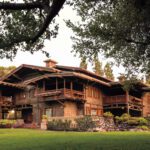
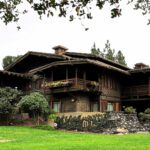



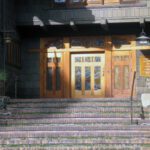

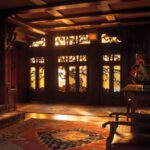
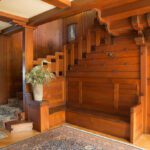

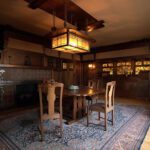
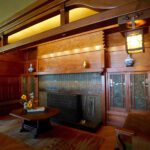
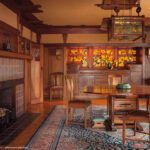

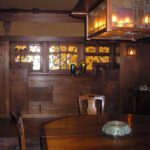


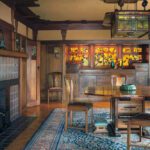
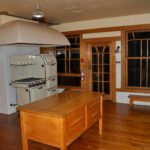



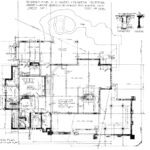
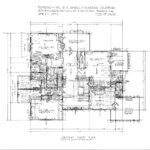

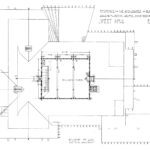


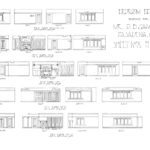

About Greene and Greene
Charles Sumner Greene (1868–1957) and Henry Mather Greene (1870–1954) were influential American architects who pivotally developed the Arts and Crafts movement in the United States. Born in Brighton, Ohio, and raised in St. Louis, Missouri, the Greene brothers moved to Pasadena, California, where they established their architectural firm, Greene & Greene.
They studied at the Massachusetts Institute of Technology and were deeply influenced by their travels to Europe and Japan. Their work, notably characterized by a distinctive blend of Craftsman-style bungalows with Asian influences, emphasized natural materials and exquisite craftsmanship. Their most famous work, the Gamble House in Pasadena, remains a celebrated example of high craftsmanship and aesthetic harmony in American architecture.
Notes & Additional Credits
- Lead Architects: Charles Sumner Greene and Henry Mather Greene
- Master Craftsmen and Artisans: Peter and John Hall
- Greene & Greene: Masterworks by Bruce Smith, Alexander Vertikoff

